I was not a fan of the original Death Stranding, partly because I didn’t grow up with Hideo Kojima’s influential titles, and I didn’t care for the “strand-type” gameplay of the highly experimental debut title. That changed a little bit when I played the Director’s Cut for review on PS5, though I never managed to give it enough time to get its hooks into me. Death Stranding 2: On The Beach has changed that, and I’m now fully on board for whatever the mad genius has planned next.
Video game sequels are often exciting, allowing their creators to expand their horizons and aim for exponentially deeper mechanics and ambitions. That’s certainly the case for most Sony-published sequels. In the PlayStation 5 generation, we’ve seen sequels that surpassed the originals in their creativity and mechanical depth. Titles like God of War: Ragnarok and* Horizon: Forbidden West* took ideas from the original instalments and turned up the dials to 11. DS2 joins them as one of the most improved sequels of all time. This will be a spoiler-free review of the game.
One of the biggest criticisms of the original was its snail’s pace and somewhat convoluted storytelling, with Kojima’s trademark expository dialogue that didn’t do it any favours. You’d have to stick with it for a long time, though this was improved in the Director’s Cut, to get to the good stuff.
Death Stranding 2 doesn’t make the same mistake, instantly kickstarting its story with heightened personal stakes. Of course, a lot of the legwork had already been done with the original, so you don’t spend any time doing homework by learning this world’s history from NPCs. DS2 tells a more personal, relatable story that’s likely to strike a chord with the masses that gave DS1 the side-eye. It doubles down on the isolationist themes of the original, but with a hopeful, optimistic outlook that perhaps echoes Hideo Kojima’s sentiments and experience with the entertainment industry in a post-DS1 world.
DS2’s Gameplay Improvements are a Double-Edged Sword
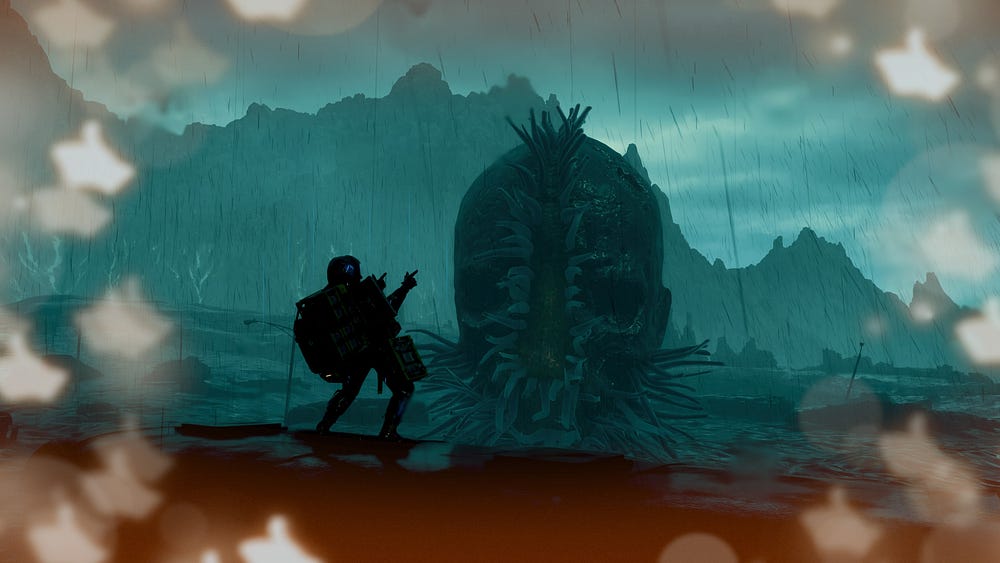
There’s a lot of Metal Gear Solid 5 in DS2. A lot. Like The Phantom Pain, DS2 thrives as a fun sandbox, open for any creative player to put their skills to use. Want to ride a coffin as a surfboard and shoot enemies like Rollerdromei? Sure. Interested in arming your cargo with bombs and showering them above an enemy base? Have at it. What about, uh, pissing on your enemies to disintegrate them? Kojima says yes, please.

There are tons of quality-of-life upgrades in DS2. Everything from the controls to the progression has been adjusted in meaningful ways to the extent that it may feel like an overcorrection. Unlike DS1, you won’t find yourself missing critical components like ladders and climbing anchors as much in the sequel, which sometimes takes away from the feeling of isolation and the desperation that the original very heavily pushed on you. In fact, I don’t think I needed to use more than 4 ladders in my entire 40-hour playthrough. If you’re playing online, you’ll always find those tools scattered around the map at critical junctions by other players.
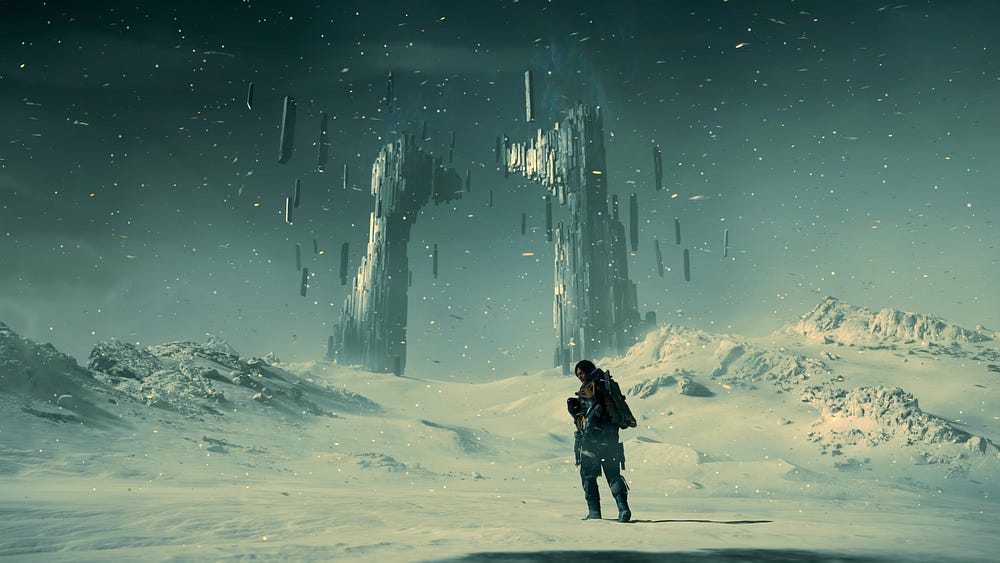
Want to transport a smorgasbord of cargo and resources to a porter across the map? Just use the DHV Magellan, your home base, and use fast travel to skip over any hazards along the way. Building roads and zipline networks can still be cathartic, and with both the narrative and cyclical nature of the map in mind, you’ll thank yourself for connecting routes in meaningful ways for future backtracking.
The menu system has also been revamped with a more navigable design. Moving cargo from Sam’s backpack to the tool racks, the vehicles, or the floating carrier takes just a few seconds. You can also use the handy D-pad shortcuts to auto-arrange cargo in a jiffy.
The mission design also pushes you to interact with enemies far more than the original ever did. There are enough tools in Sam’s backpack to tackle situations any way the player wants. BT encounters are significantly easier this time around, though that’s a double-edged sword. In DS1, I was actually afraid of treading through a BT-infested swamp. Now, I may be mildly annoyed, but I almost always had enough blood grenades and other weapons to dispose of the invisible ghosts.
Boss battles are also improved, though they’re still easier than the threat they’re presented as. You’ll battle giant kaijus and mech droids while navigating tar-filled battlefields, but the highlight of the show is the battles with human characters, which dazzle with spectacular lightworks. It’s here that Kojima’s love for blockbuster mise-en-scène is married with player agency.
Should We Have Connected? Yes, Silly!
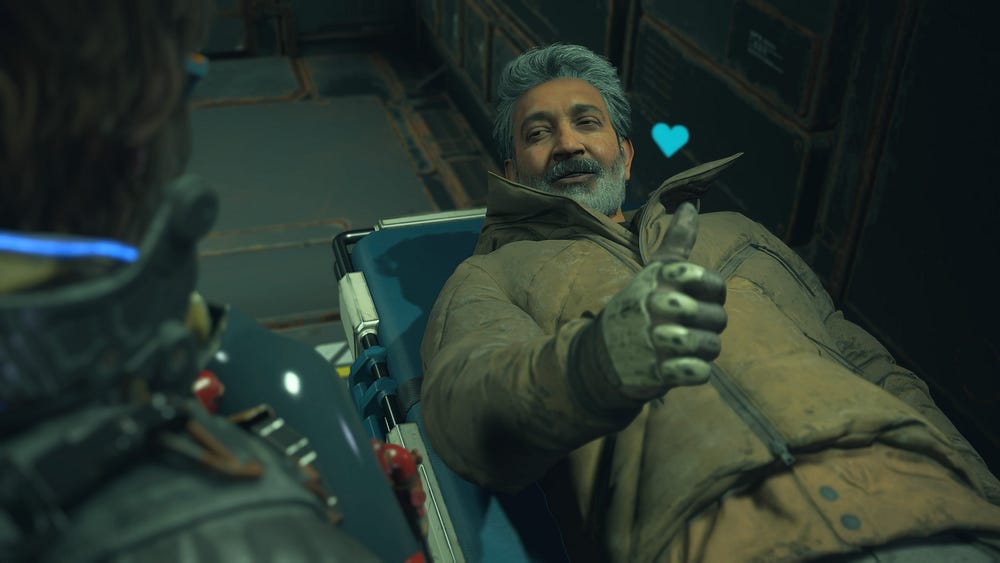
All of these gameplay improvements may feel like obstructions in the way of the game’s intended feel, but I think they bolster the core theme and message of the title. It’s all about forming human connections, literally and figuratively, while being a more welcoming game for new players. DS2’s story, even more than the first one, focuses on Sam’s continued reliance on other people to help him in times of need.
The world of Death Stranding is a sad one. People may have wondered whether finding solace in the persistent online connections of the first one amidst the COVID-19 pandemic was the secret to its success. Death Stranding 2 arrives at a relatively “normal” time in our lives, although it would be hard to believe once you take a look at our increasingly disruptive online environments.
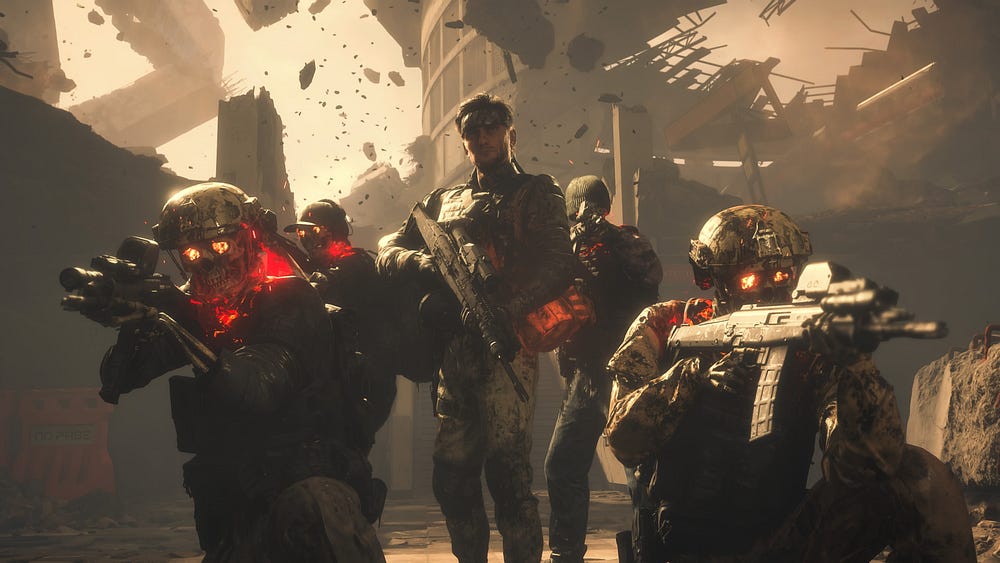
DS2 also comes at a tough time for me personally. If anybody’s been following me on social media, they’ll know that I was made redundant after the dissolution of my previous workplace. The last few months have been tough, and it’s only now that I’ve realised the true importance of a support system. Death Stranding 2 delivers the dopamine hits and a sense of security and warmth with every interaction.
Every character gets specific moments to shine with scenes that act as short films unto themselves. I won’t be forgetting the story of Rainy, Tomorrow and Tarman anytime soon. Some of these need to be sought out, such as Tarman’s tragic backstory. The crew of the DHV Magellan feel like a real family, and their constant presence only adds to that warm, familiar feeling of arriving home after a hard day of delivering packages.
Influences from games like Final Fantasy 7 Rebirth and God of War can be easily spotted here, from on-rails sequences on bikes to the addition of a talkative figure on your waist. Dollman, though, is much more palatable than Mimir, and his presence is much more appreciated, as the entire point of the sequel is to surround Sam with a system that counters his depression and distrust in humanity.
Nirvana
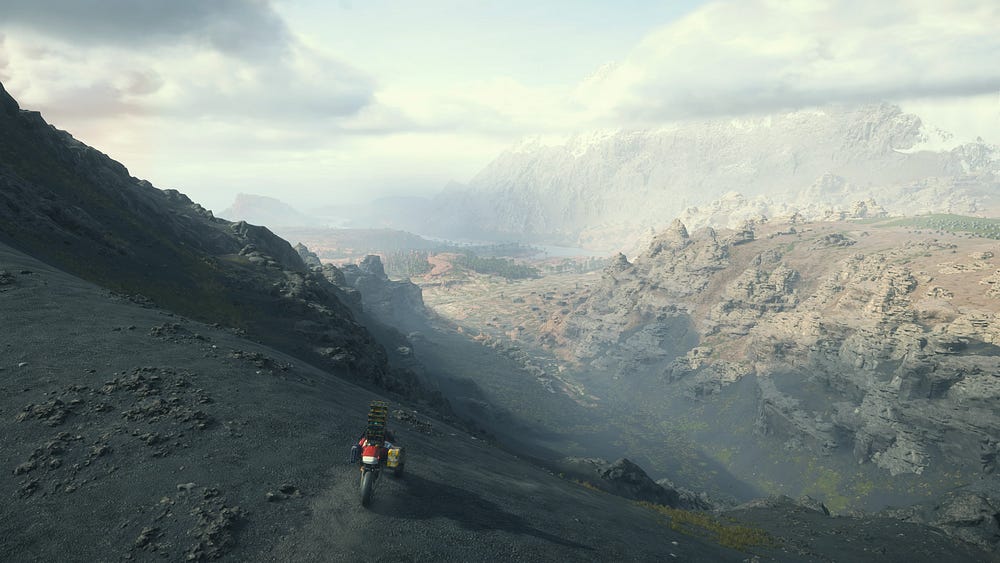
Sam’s journey this time takes him to continents outside the UCA. While the trailers revealed that it starts in Mexico, we quickly move on to bigger pastures in good old Australia. With that, the different locales have enough sprinkles of personality, either culturally or topographically, to separate them from the Americana of the original.
They may not be physically accurate, but that’s a bridge I’m willing to cross for the sake of emotional drama. Like the first game, emotionally charged compositions accompanied me on the journey to connecting the rest of the world. Both the score and the soundtrack from Ludvig Forssel and Woodkid, respectively, are as resonant and apt for this adventure.
What makes DS2 a current-gen PS5 game, beyond the fantastically detailed character models and scenes, is the impactful effects of nature. Flash floods, avalanches, and dust storms impact how you plan your next walkabout and routinely shake up the monotony of the journey. There are very few games where the vastness of the draw distance becomes intertwined with the actual gameplay mechanics, and DS2 is a champion at it.
DS2 also features deeper characterisation than its predecessor. Many mock Kojima’s penchant for being too literal with his character names and the themes associated with them. Of course, there are plenty of indulgent cutscenes where you can relax with your tub of popcorn for some high art. I don’t mind those, especially when I finally gave in to Kojima’s impulses for cinematic storytelling that are sometimes at odds with the nature of the gameplay.
The returning episodic structure can be inconsistent with its pacing, but it does complement the specific narrative beats contained within. Almost every character, old and new, is given closure. I don’t think we need a third game here, and it seems Kojima is also ready to move on.
Verdict
Death Stranding 2: On The Beach is a delightful, weird, goofy, ambitious, and personal sequel that takes everything Kojima Productions is good at and elevates it to the highest peaks.
Death Stranding 2: On The Beach is available on PlayStation 5*.*



